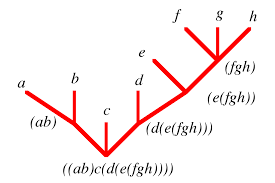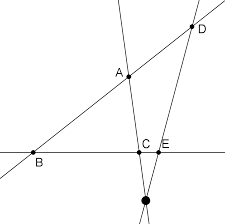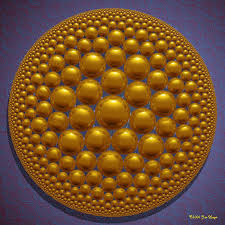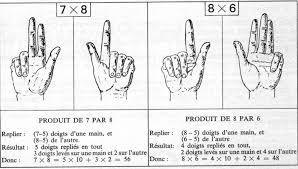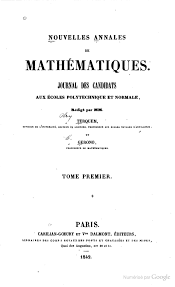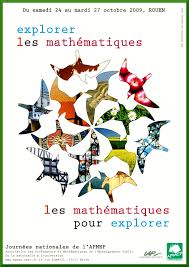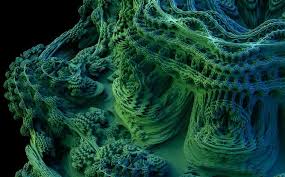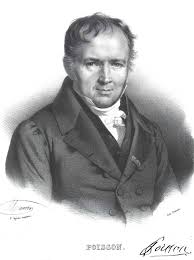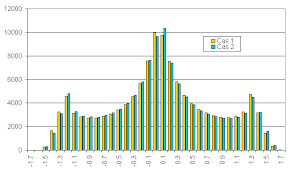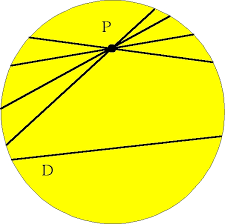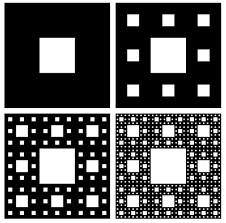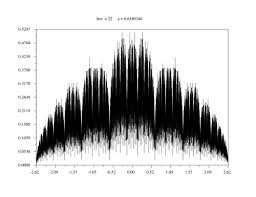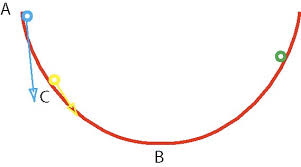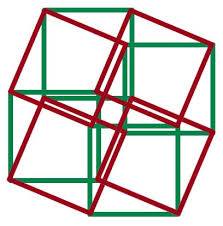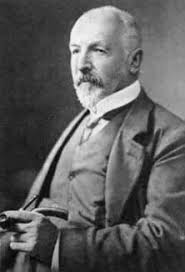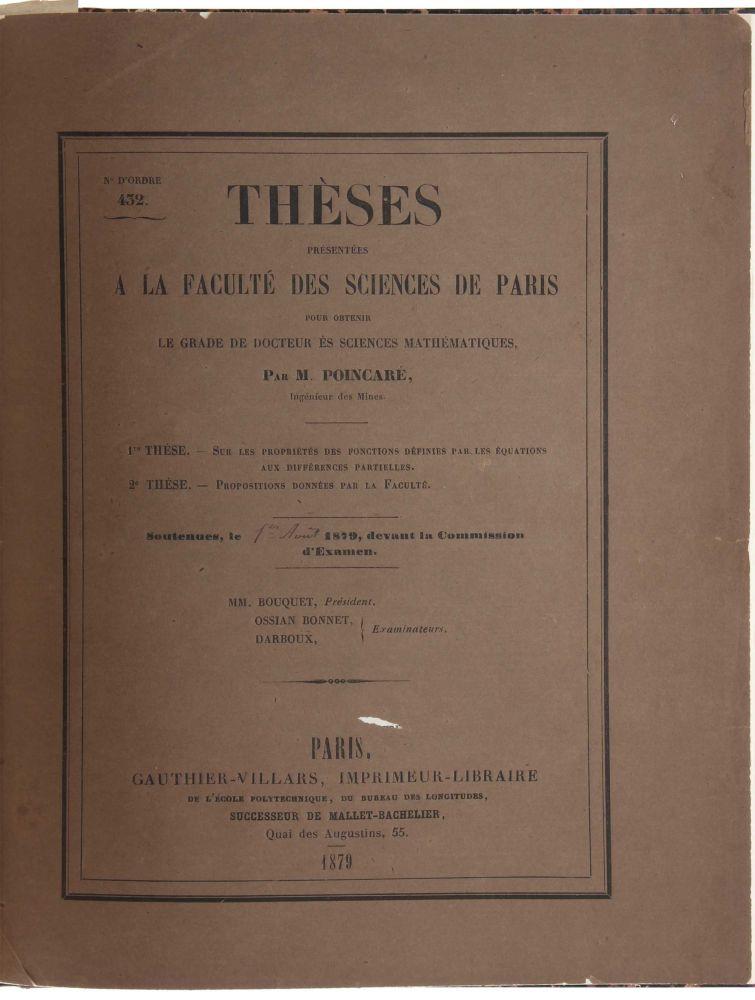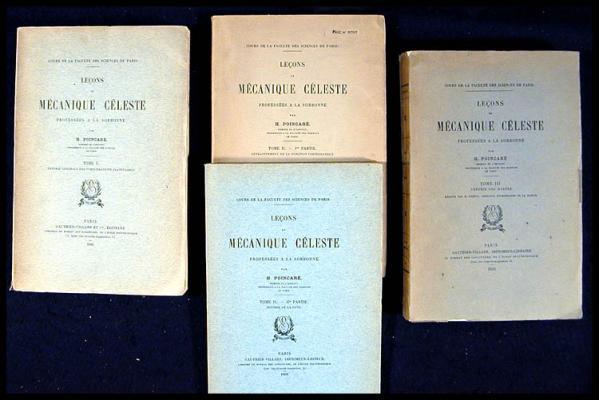25/12/2012
Pour compléter le livre de Cédric Villani "Théorème Vivant" Chapitre 2 p17 Amortissement Landau
Amortissement LANDAU
"En physique, l’amortissement Landau, du nom de son découvreur1, le physicien russe Lev Davidovich Landau, est le phénomène d'amortissement (décroissance exponentielle en fonction du temps) des oscillations longitudinale...."
Lire la suite :
12:21 | Lien permanent | Commentaires (0) |  |
|  del.icio.us |
del.icio.us |  |
|  Digg |
Digg | ![]() Facebook
Facebook
LIVRE Vorlesungen über Gastheorie BOLTZMANN, LUDWIG
Vorlesungen über Gastheorie
BOLTZMANN, LUDWIG
Détails bibliographiques
Titre : Vorlesungen über Gastheorie
Éditeur : Leipzig: J.A. Barth, 1896, Leipzig
Date d'édition : 1896
Reliure : Hardcover
Edition : First Edition
Description :
2 vols. FIRST EDITION. 8 vo. Orig. printed cloth, gilt top edges. viii, 204; x, 265, (4, pub. ads) pp. Figs. in the text. The first volume with the stamps of Zeiss Bibliothek in a number of places. Minor discoloration on lower spine and lower front cover of vol. one from removed taped label with partial loss of printed letters on the front cover and to the edge of the brown front pastedown; otherwise a clean, very good set in the original binding. "In 1872, the Austrian physicist Ludwig Boltzmann (1844-1906) derived the transport equation for distribution of velocity among the molecules of a gas. This equation, which is so important in the kinetic theory of gases, had been previously derived by Maxwell, but the form in which Boltzmann derived it led him immediately to the concept of entropy as related to the probability of various velocity distributions among an assembly of gas molecules. This major contribution and many others that Boltzmann made to the kinetic theory of gases were summarized in his masterpiece of theoretical physics, 'Vorlesungen über Gastheorie'. This work can rightly be considered the peak of development achieved in the modern kinetic theory of gases." (Stanitz, Sources of Science & Technology, no.79). N° de réf. du libraire 000047
12:15 | Lien permanent | Commentaires (0) |  |
|  del.icio.us |
del.icio.us |  |
|  Digg |
Digg | ![]() Facebook
Facebook
An Introduction to the Theory of the Boltzmann Equation Stewart Harris - broché
An Introduction to the Theory of the Boltzmann Equation
12:07 | Lien permanent | Commentaires (0) |  |
|  del.icio.us |
del.icio.us |  |
|  Digg |
Digg | ![]() Facebook
Facebook
LIVRE Stochastic Numerics for the Boltzmann Equation, Springer Series in Computational Mathematics Serge J. Rjasanow, Wolfgang Wagner - relié
Stochastic Numerics for the Boltzmann Equation, Springer Series in Computational Mathematics
Serge J. Rjasanow, Wolfgang Wagner - relié
| EAN | 978-3540252689 |
|---|---|
| Editeur | Springer Verlag |
| Hauteur | 23.50 cm |
| Langues | English |
| Largeur | 1.91 cm |
| Longueur | 15.24 cm |
| Poids | 0.50 kg |
| Divers | |
| Détails Techniques | - Illustrations : Non |
| Nombre de pages | 256 |
12:05 | Lien permanent | Commentaires (0) |  |
|  del.icio.us |
del.icio.us |  |
|  Digg |
Digg | ![]() Facebook
Facebook
Direct Methods for Solving the Boltzmann Equation and Study of Nonequilibrium Flows, Fluid Mechanics and Its Applications V. V. Aristov - relié - janvier 2001
Direct Methods for Solving the Boltzmann Equation and Study of Nonequilibrium Flows, Fluid Mechanics and Its Applications
V. V. Aristov - relié - janvier 2001
12:04 | Lien permanent | Commentaires (0) |  |
|  del.icio.us |
del.icio.us |  |
|  Digg |
Digg | ![]() Facebook
Facebook
LIVRE The lattice boltzmann equation Sauro Succi (Auteur) - relié. Paru en 06/2001
12:02 | Lien permanent | Commentaires (0) |  |
|  del.icio.us |
del.icio.us |  |
|  Digg |
Digg | ![]() Facebook
Facebook
Pour compléter le livre de Cédric Villani "Théorème Vivant" Chapitre 1 p14 L'équation de Boltzmann
Équation de Boltzmann
"L'équation de Boltzmann (1872) est une équation intégro-différentielle de la théorie cinétique qui décrit l'évolution d'un gaz peu dense hors d'équilibre. Elle permet notamment de démontrer lethéorème H, et d'étudier la relaxation du gaz d'un état d'équilibre local1 vers l'équilibre global caractérisé par la distribution de Maxwell des vitesses.
La première solution analytique complète..."
Lire la suite : http://fr.wikipedia.org/wiki/%C3%89quation_de_Boltzmann
11:58 | Lien permanent | Commentaires (0) |  |
|  del.icio.us |
del.icio.us |  |
|  Digg |
Digg | ![]() Facebook
Facebook
16/12/2012
VIDEO Cédric Villani - La meilleure et la pire des erreurs de Poincaré
11:19 | Lien permanent | Commentaires (0) |  |
|  del.icio.us |
del.icio.us |  |
|  Digg |
Digg | ![]() Facebook
Facebook
VIDEO Rencontre avec Cédric Villani, auteur de « Théorème vivant »
11:17 | Lien permanent | Commentaires (0) |  |
|  del.icio.us |
del.icio.us |  |
|  Digg |
Digg | ![]() Facebook
Facebook
Courbe elliptique

"En mathématiques, une courbe elliptique est un cas particulier de courbe algébrique, munie entre autres propriétés d'une addition géométrique sur ses points.
Les courbes elliptiques ont de nombreuses applications dans des domaines très différents des mathématiques : elles interviennent ainsi en mécanique classique dans la description du mouvement des toupies, en théorie des nombres dans la preuve du dernier théorème de Fermat, en cryptologie dans le problème de la factorisation des entiers ou pour fabriquer des codes performants.
Contrairement à ce que son nom pourrait laisser croire, l'ellipse n'est pas une courbe elliptique. Le nom des courbes elliptiques vient historiquement de leur association avec les intégrales elliptiques, elles-mêmes appelées ainsi car elles servent en particulier à calculer la longueur d'arcs d'ellipses.
À l'aide d'un choix adapté de coordonnées, une courbe elliptique peut être représentée dans un plan par une équation cubique de la forme :

Les coefficients  ,
,  ,
,  ,
,  et
et  sont des éléments du corps
sont des éléments du corps  sur lequel est définie la courbe, mais ils ne sont pas déterminés par la courbe..."
sur lequel est définie la courbe, mais ils ne sont pas déterminés par la courbe..."
Lire la suite :
http://fr.wikipedia.org/wiki/Courbe_elliptique
11:15 | Lien permanent | Commentaires (0) |  |
|  del.icio.us |
del.icio.us |  |
|  Digg |
Digg | ![]() Facebook
Facebook
Vidéo L'intuition scientifique - Andrew Wiles et le théorème de Fermat
10:47 | Lien permanent | Commentaires (0) |  |
|  del.icio.us |
del.icio.us |  |
|  Digg |
Digg | ![]() Facebook
Facebook
Grigori Perelman par Cédric Villani 25.10.10
"Grigori Perelman naît le 13 juin 1966 à Leningrad,
l’actuelle Saint-Pétersbourg. Sa mère, intellectuelle
juive, avait renoncé à une carrière de mathématicienne pour se consacrer à l’éducation de ses deux
enfants, Grigori et Lena, tous deux devenus mathématiciens.
À cette époque, les mathématiques constituaient l’un des rares
moyens d’accéder à des trésors bannis par le gouvernement
dans d’autres domaines : le raisonnement logique, la..."
Lire la suite :
http://cedricvillani.org/wp-content/uploads/2012/10/perel...
10:40 | Lien permanent | Commentaires (0) |  |
|  del.icio.us |
del.icio.us |  |
|  Digg |
Digg | ![]() Facebook
Facebook
15/12/2012
Création d'un portail mathématique pour l'industrie italienne
La naissance d'un "Portail Mathématique pour l'Industrie Italienne" a été annoncée à la fin du mois de juin lors du congrès biennale de la Société Italienne de Mathématique Appliquée et Industrielle (SIMAI) à Turin. Son objectif est de faire connaitre au monde de l'entreprise l'offre mathématique potentiellement utile au monde industriel. Ci-dessous est reporté un entretien de Roberto Natalini, directeur...
Lire la suite :
http://www.bulletins-electroniques.com/actualites/71448.htm
15:19 | Lien permanent | Commentaires (0) |  |
|  del.icio.us |
del.icio.us |  |
|  Digg |
Digg | ![]() Facebook
Facebook
Enquête internationale sur la mathématique et les sciences
Enquête internationale sur la mathématique et les sciences
LBR.ca - QUÉBEC, le 11 décembre 2012 - La Fédération des commissions scolaires du Québec (FCSQ) est très heureuse de souligner la réussite des élèves québécois à l'enquête internationale sur la mathématique et les sciences (TEIMS) dont les résultats ont été dévoilés aujourd'hui.
C'est en mathématique de 2e secondaire que les élèves du Québec se sont le plus illustrés avec d'excellents résultats. La performance mérite d'être soulignée puisque les élèves ont non seulement amélioré leurs résultats par rapport aux enquêtes précédentes (2003 et 2007), mais ils se sont classés les premiers au Canada et ont obtenu des résultats nettement supérieurs à la...
Lire la suite :
http://www.lbr.ca/index.php?pageID=5&idA=19809
15:18 | Lien permanent | Commentaires (0) |  |
|  del.icio.us |
del.icio.us |  |
|  Digg |
Digg | ![]() Facebook
Facebook
NIELS HENRIK ABEL MEMORIAL Publie A L'Occasion Du Centenaire De Sa Naissance. HOLST, Elling STORMER, Carl & SYLOW, L. [Editors]
15:14 | Lien permanent | Commentaires (0) |  |
|  del.icio.us |
del.icio.us |  |
|  Digg |
Digg | ![]() Facebook
Facebook
Niels Henrik ABEL LIVRE 1881 Oeuvres complètes. Nouvelle edition publiee aux frais de l'Etat Norvegien par MM. L. Sylow et S. Lie. Tome premier + Tome second., 2 Volumes (so complete), Abel, Niels Henrik.
15:12 | Lien permanent | Commentaires (0) |  |
|  del.icio.us |
del.icio.us |  |
|  Digg |
Digg | ![]() Facebook
Facebook
Grigori Perelman face à la conjecture de Poincaré (French Edition) (ISBN 10: 2100508687 / ISBN 13: 9782100508686 ) O'Shea, Donal
15:04 Publié dans Grigori Perelman | Lien permanent | Commentaires (0) |  |
|  del.icio.us |
del.icio.us |  |
|  Digg |
Digg | ![]() Facebook
Facebook
Jules Henri POINCARE Thèses présentées a la Faculté des sciences de Paris pour obtenir le grade de docteur des sciences mathématiques. 1re These. Sur les propriétés des fonctions définies par les équations aux différences partielles. 2e These
Thèses présentées a la Faculté des sciences de Paris pour obtenir le grade de docteur des sciences mathématiques. 1re These. Sur les propriétés des fonctions définies par les équations aux différences partielles. 2e These. Propositions données par la Faculté. Soutenues le 1er aout 1879, devant la commission d'examen.
POINCARÉ, Jules Henri.
Titre : Thèses présentées a la Faculté des sciences ...
Éditeur : Gauthier-Villars, Paris
Description :
14:59 | Lien permanent | Commentaires (0) |  |
|  del.icio.us |
del.icio.us |  |
|  Digg |
Digg | ![]() Facebook
Facebook
Henri POINCARÉ LIVRE de 1890 Sur le problème des trois corps et les équations de la dynamique. (In: Acta Mathematica, vol. 13)
14:56 | Lien permanent | Commentaires (0) |  |
|  del.icio.us |
del.icio.us |  |
|  Digg |
Digg | ![]() Facebook
Facebook
Poincare, Henri Leçons de mécanique céleste professées a la Sorbonne [Tome I, Tome II, Tome III] (Lessons of Celestial Mechanics)
14:53 | Lien permanent | Commentaires (0) |  |
|  del.icio.us |
del.icio.us |  |
|  Digg |
Digg | ![]() Facebook
Facebook











